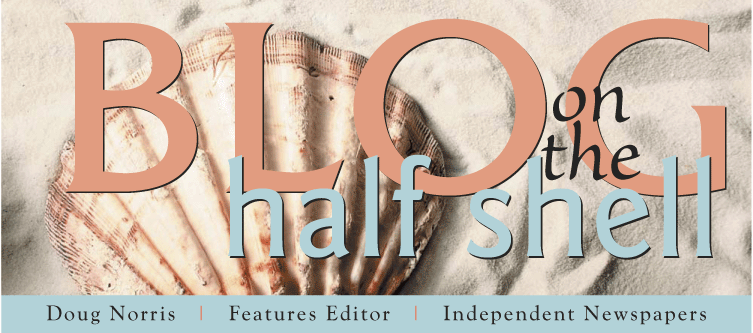Except for the freak pre-Halloween snowstorm that added a chilling grace note to the weekend of molten iron pours and trick-or-treating zombie brides, late autumn and early winter were unseasonably warm this year, as the southern New England landscape never got out of its bleak brown-gray bathrobe day after day. So even the most hardened cynic might be forgiven for believing in a little Christmas magic on the morning of Dec. 25, when a few fat snowflakes tumbled down and the neighborhood cove cascaded in flurries for an hour or so, giving us a taste of a white Christmas, if not the feast that many had hoped for.
There was less poetry in the real world, but no shortage of holiday weirdness, at least in the news pages. The following item comes from the South Kingstown police beat in yesterday’s South County Independent:
A LITTLE HO-HO-HO
A North Kingstown woman is under arrest after she allegedly tried to give the Wakefield Mall Santa a lap dance and then stole DVDs from one of the stores.
The item goes on to describe the woman’s bizarre behavior. According to the photographer on the scene, Santa handled the situation with the dignity one would expect from a centuries-old elf. Before allegedly stealing five DVDs, the woman managed to get the photo of herself on Santa’s lap from the photographer, telling him and St. Nick to “come watch her dance at Cheater’s [a Providence strip club].”
Another item, this time from the North Kingstown police beat in yesterday’s North East Independent, falls under the Grinch category:
LARCENY
Greg Pignolet, of 91 King Phillip Drive, reported on Friday that his decorative winged pig was stolen from his front yard overnight.
While we certainly don’t condone the theft, it does strike us as odd that a winged pig would go missing around the holidays. We have heard that animals can speak on Christmas Day. Perhaps pigs can fly, too.
Finally, we also noticed in our papers that one local senior center plans to hold its New Year’s Eve celebration on Saturday at 10:30 a.m. “with the ball to drop at noon.” We like this idea. Beats having to spend another midnight watching Z-List celebrities complain about the cold in New York and Fergie introducing lame musical acts from Los Angeles.
Having said that, perhaps it’s appropriate that, in households across America, “dropping the ball” is the signature moment of New Year’s Eve. Isn’t that the year in a nutshell? We begin with hope and promise and resolutions of change; we end worn-out, beaten down, glad it’s over. Year after year, fumbling through, mostly dropping the ball. And yet there it is again, lying in front of us, waiting to be picked up and carried across the goal line.
What’s your New Year’s resolution?


